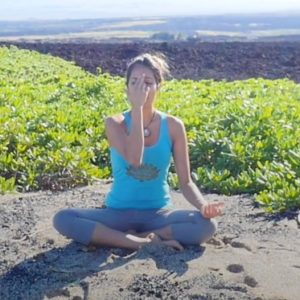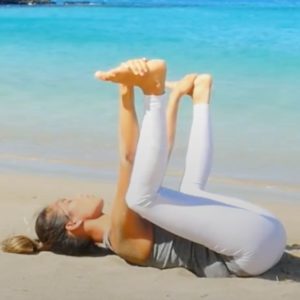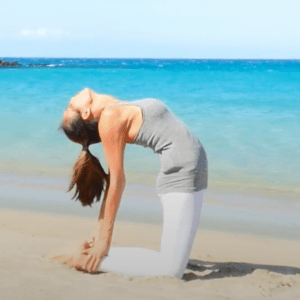Today’s Poses: Legs up the wall and Eagle Poses
Legs up the wall and Eagle Poses
Legs up the wall and Eagle Poses strengthen the leg muscles and loosen the joints of legs and arms. Try these poses with Guided Yoga Series from YouVeda.
Legs up the wall
Legs Up the Wall Pose (or Viparita Karani) is a restorative yoga posture that allows the mind and the body to relax, relieving stress and tension. It is one of the most approachable yoga poses as it doesn’t require much flexibility or strength. But even though it’s a passive pose, its benefits are pretty amazing.
Steps
- Begin seated beside an open wall, with your hip and shoulder against the wall.
- Gently lower your torso down to the ground as your legs lift against the wall.
- Option to wiggle closer to or further away from the wall to your comfort level.
- Option to place a block, pillow, or folded blanket under your hips to release any discomfort in the low back or hamstrings.
- Allow your head to rest on the ground or a pillow and place your arms wherever they are most comfortable.
- Stay anywhere from one to 15 minutes.
- To release, push the bottoms of your feet into the wall and lift your hips slightly. If using support, move the support out of the way. Gently roll to one side and stay for a few breaths before returning to your seat.
Benefits
- It can offer relief from symptoms of arthritis, headaches, low blood pressure, and insomnia.
- Eases symptoms of premenstrual syndrome and menopause.
- Relieves tired feet and legs.
- Gently stretches the hamstrings and legs.
- It can relieve discomfort in the lower back.
- Calms the mind.
- Eases symptoms of anxiety and stress.
Eagle Pose
In Indian mythology, Garuda is the king of the birds and is one of the three principal animal deities, along with Ganesha, the elephant-headed god, and the monkey god, Hanuman. Garuda is associated with Vishnu, the preserver god of the great trinity. He is known as a bringer of justice possessing supreme intelligence. The tradition of Garuda spreads far from India so much so that it is the national symbol in Thailand and Indonesia, as well as being a very prominent figure in all Buddhist countries. Its agility and sharpness of mind and the balancing of the wind by both wings in action are all mimicked by this unique asana.
Steps
- Feet parallel, legs straight, knee joints unlocked.
- Stand stable on the left leg, and bend the left knee. Lifting the right leg, place the right thigh onto the left thigh. Wrap the right lower leg as far as possible around the left calf.
- Lift the left upper arm parallel to the floor, in front of the body. Raise the left forearm so it points straight upward. Move the right upper arm under the left, and wrap the right forearm around the left.
- Index and middle finger of the right-hand catch hold of the left thumb, which is pointing upward.
- The arms are then brought forward and downward to the level of the eyes so that one can just look over the tips of one’s fingers.
- Keep the spine vertical, avoiding the tendency to lean forward.
- Draw the right side of the pelvis backward, so that the hips remain squared, without any rotation, twisting, or tilting.
- The head is in line with the spine in a neutral position. The eyes are open, with the gaze firmly fixed on a spot up front, at the level of the forehead.
- Firstly, unwrap the legs to come to a stable standing position on both legs. Secondly, the arms are unwrapped and the eyes are closed for the awareness phase.
Benefits
- Strengthens the leg muscles.
- Loosens the joints of legs and arms.
- Tones the nerves of the limbs.
- Activates prana in Sushumna Nadi, redirecting vital and sexual energy to the brain
- Harmonizes the mind, increases intelligence, and concentration.




